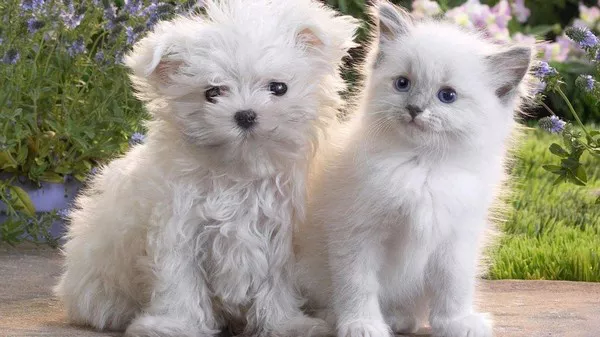Introduction to Bengal Cats
Bengal cats are a captivating and distinctive breed known for their stunning coat patterns, muscular build, and energetic personalities. Originating from the crossbreeding of domestic cats with the Asian leopard cat, Bengals have gained popularity worldwide for their exotic appearance and playful demeanor.
Physical Traits
One of the most striking features of Bengal cats is their luxurious coat, which often resembles that of their wild ancestors. Bengals typically have short, dense fur with a unique pattern known as “rosettes” or “spots,” reminiscent of a leopard or jaguar. These markings can vary in size and shape, ranging from small spots to larger, more defined rosettes.
In addition to their eye-catching coat, Bengal cats possess a muscular and athletic body structure. They are medium to large in size, with long, lean bodies and strong, agile limbs. Their rounded heads are complemented by large, almond-shaped eyes that can range in color from green to gold.
Behavioral Traits
Bengal cats are renowned for their spirited and energetic personalities. They are highly intelligent and curious animals, often displaying a keen interest in their surroundings. Bengals are known for their love of play and exploration, and they thrive in environments that provide ample mental and physical stimulation.
These cats are also incredibly affectionate and form strong bonds with their human companions. They enjoy being involved in household activities and may follow their owners from room to room, eager to participate in whatever they are doing. Bengals are often described as “dog-like” in their behavior, as they can be trained to perform tricks and enjoy playing games like fetch.
Genetic Testing
For those curious about the ancestry of their cat, genetic testing offers a definitive method for identifying Bengal lineage. DNA testing can provide insights into the breed composition of a cat, confirming whether it has Bengal ancestry or is a purebred Bengal.
By analyzing the cat’s DNA, genetic testing can reveal the presence of specific markers associated with Bengal cats, such as those inherited from the Asian leopard cat. This information can be valuable for breeders seeking to produce Bengal mixes with desirable traits or for owners interested in learning more about their cat’s background.
Comparison with Other Breeds
While Bengal cats share some similarities with other breeds, they also have distinct characteristics that set them apart. One breed often compared to Bengals is the Egyptian Mau, which also features spotted coat patterns and a sleek, muscular build. However, Bengals tend to have larger, more pronounced spots and a more playful demeanor compared to the typically reserved Mau.
Another breed sometimes mistaken for Bengals is the Ocicat, which shares a similar appearance but lacks the wild ancestry of the Bengal. Ocicats have spots or rosettes on their coat but are bred from domestic cats rather than hybrids with wild species. Additionally, Bengals tend to be more active and vocal than Ocicats, displaying a greater affinity for interactive play.
Expert Opinions
Veterinarians and cat breeders can offer valuable insights into identifying Bengal traits in mixed-breed cats. According to Dr. Sarah Smith, a feline specialist, “Bengal cats often exhibit a high level of energy and intelligence, along with a playful and inquisitive nature. These traits can be indicative of Bengal ancestry, especially when combined with distinctive coat patterns.”
Similarly, experienced Bengal breeders emphasize the importance of observing a cat’s behavior and physical characteristics when determining its breed heritage. “While DNA testing can provide confirmation of Bengal lineage, many traits associated with Bengals are readily apparent in mixed-breed cats,” says John Doe, a veteran Bengal breeder. “Look for a combination of muscular build, spotted coat patterns, and an outgoing personality to identify potential Bengal mixes.”
Care for Bengal Mixes
Providing proper care for Bengal mixes involves meeting their unique dietary, exercise, and health needs. Like their purebred counterparts, Bengal mixes benefit from a high-protein diet to support their active lifestyle and maintain muscle mass. Look for cat foods formulated specifically for active breeds, with ingredients like chicken or fish as the primary protein source.
Regular exercise is essential for keeping Bengal mixes mentally and physically stimulated. Interactive toys, puzzle feeders, and dedicated play sessions can help satisfy their need for activity and prevent boredom. Consider providing opportunities for climbing, jumping, and exploring, such as cat trees or shelves mounted on walls.
In terms of health considerations, Bengal mixes may be prone to certain genetic conditions inherited from their Bengal ancestors. These can include hypertrophic cardiomyopathy (HCM), a heart disease that affects some Bengal lines, as well as issues related to coat and skin health. Regular veterinary check-ups and preventive care are crucial for monitoring and addressing any potential health concerns.
Community and Support
For Bengal cat owners seeking support and information, online communities and resources offer valuable resources and connections. Websites and forums dedicated to Bengal cats provide a platform for sharing experiences, asking questions, and accessing expert advice on topics ranging from behavior and training to health and genetics.
In addition to online communities, local Bengal cat clubs and breed-specific organizations can offer opportunities for networking with other owners and participating in events such as cat shows and breed exhibitions. These groups often provide educational materials and resources to help owners better understand and care for their Bengal cats.
Conclusion
In conclusion, identifying whether your cat is a half Bengal involves considering a combination of physical and behavioral traits, along with potentially utilizing DNA testing for confirmation. Bengal cats are distinguished by their striking coat patterns, muscular build, and playful personalities, making them a unique and beloved breed among cat enthusiasts.
Regardless of breed, all cats deserve love, care, and attention from their owners. Whether your feline companion is a purebred Bengal, a Bengal mix, or a unique combination of breeds, cherish the bond you share and provide them with the care and affection they need to thrive.
Related Topics:

























